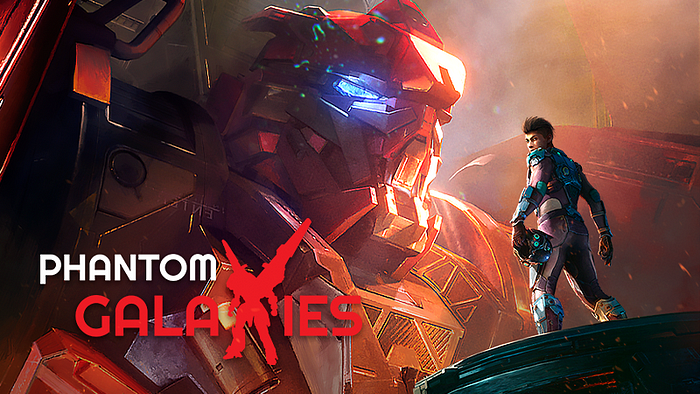Play-to-Earn is Big Business; Play-and-Earn will be Far Bigger
The future of blockchain gaming is ‘game first, earn second.’ The Red Village is ready for it.

The last couple of years in the blockchain space have been revolutionary; it is truly not an understatement to say that we have seen a seismic shift in the paradigms of finance, of digital ownership, and, importantly, in gaming.
Showing true potential to radically transform, or at least markedly augment the world as we know it is the humble non fungible token, or NFT. Since the ‘mass’ adoption of NFTs began in early 2021 (or at least since the acronym entered the vernacular and everyone from your Mom to your hairdresser started talking about them) NFTs have dominated the blockchain world.
Prying crypto traders away from black screens illuminated by green and red candles, NFTs ignited the popular imagination in a way that nothing else in living memory has. While of course the groundwork for NFTs has been laid for years now, to the casual observer it would appear that an industry was born in a matter of weeks.
In a way that cryptocurrency never could, the concept of NFTs engaged the retail crowd— everyone remembers collecting baseball cards, or basketball cards, or Pokémon cards, growing up. And everyone has a story about a ‘friend of a friend’ who found a misprint shiny Pikachu in the bottom of a sock drawer somewhere and instantly added five figures to their bank account. Humans love collecting stuff — we value our possessions, we love to show them off, and the rarer they are, the more others also want them; the more they are worth.

In a digital age, it only makes sense that we collect digital mementos. In a blockchain age, it only makes sense that we can prove their authenticity in an indelible way. In a world where the gaming industry generates more revenue than the fading star of Hollywood, it only makes sense that gamers would want to earn while they play. In 2021, these fundamental elements of logic collided with a bang; and blockchain gaming became the talk of the town.
The P2E story thus far
To anyone who follows the industry, the story is familiar; but for those who don’t know, play-to-earn (P2E) games like Axie Infinity have revolutionised the way that people perceive the blockchain, the utility that NFTs can provide, and even the way that people can earn an income. Winning battles in Axie gets the user Smooth Love Potion (SLP), a token that can be exchanged for fiat (“real” money) — so good players are rewarded for being good at the game. Players have made thousands, if not millions. Axie generated more than $29m a week for its developer, Sky Mavis, and over 1 million daily users flocked to join.

The earning potential in games like Axie has been monumental; from farming tokens, breeding Axies and selling them on secondary, lending characters out as part of a ‘scholarship’ program, and selling ‘land’ itself, users and developers have been making money hand over fist. Whilst they are making money, though, P2E games have so far tended to be rather basic. The problem is inherent; the system only works so long as new players join and there is a willing stream of new money entering the economy, for example by purchasing SLP, as well as extracting from it. If there isn’t, then the downwards pressure on the token is immense. It gets harder to earn.
With billions of potential players yet to join, Axie is far from reaching the proverbial rock and the hard place. There is also huge room for innovation and growth in these dominant P2E games; with deep pockets and an obvious appetite for a transformative approach to the industry, there is nothing stopping them pivoting and future-proofing their model. There is undoubtedly room for both P2E and P&E games in the space, and both will surely succeed.
But all pyramids have their point.
Of course, there are disparities between the AAA gaming studios releasing blockbuster titles and the majority indie studios currently building on the blockchain; and not just because of the infinite complexity of building on a nascent technology. This is changing, however, and rapidly so. In the past few months, we’ve seen announcements from giants such as Ubisoft, EA, Square Enix, and Sega that they see a future either driven by, or at least working alongside, in-game NFT ownership.
We’ve also seen indie studios such as Sydney’s Blowfish Studios (owned by industry-leading blockchain investment group, Animoca Brands) releasing AAA quality blockchain games like Phantom Galaxies, with true in-game ownership, to mass fanfare. Projects like The Sandbox are generating huge interest, positioning themselves at the pointy end of the metaverse and looking set to bridge the divide between some of the biggest titles in the world, such as Minecraft and Roblox, and the blockchain.

And as this dynamic changes, it is indisputable that the attitudes of traditional gamers will change with it. Of course, there has been trepidation around NFTs and in-game ownership, and rightly so; things like microtransactions and loot-boxes are divisive issues, to say the least. But the power of the blockchain is that it grants players interoperability, ownership, and transferability of their assets in a way that we haven’t seen before. It doesn’t mean you pay-to-win; it means you keep what you hunt.
There is also a two track economy in blockchain gaming which needs to be finely balanced. Of course, having huge participation from gamers who are trying to earn is beneficial for the base economics of growth. Guilds are great. But these net extractive participants need to be balanced with a player base who is cool with (and able to) spend money in-game without the guarantee of it being returned. These gamers might instead be happy to receive rare cosmetic items — which may have value on the secondary market regardless. Having harmony between these two groups of participants gives huge potential, and a sustainable ecosystem for the long term.
Traditional gamers, especially those with disposable income, aren’t usually looking for a way to put food on their table (unless, of course, they happen to be exceptionally good — top Esports players aren’t exactly struggling). Traditional gamers, therefore, are less enticed with the P2E idea of clicking their mouse relentlessly to generate tokens— and more excited by the game itself. And herein lies the real kicker…
If they can earn alongside having fun, rather than at its expense, that is when we’ll really see the fireworks. That is to say, as soon as the dominant Play-to-Earn (P2E) mindset in the blockchain world is replaced by one of Play-and-Earn (P&E), we’ll see the traction in the space that we are waiting for. That paradigm shift will open the floodgates and forever alter the way that people game. There are over 3 billion active gamers in the world. Once they turn their eyes to the blockchain space, the possibilities are endless.

There are a million and one different ways for traditional game studios and blockchain game developers to monetise their brands, to make money, and to keep their investors happy. We’ve seen hundreds of different token models put in place; some more successful than others. At the core of all of their options, though, is community.
As anyone who has ever done a bit of change management will tell you, introducing anything new will always be like pulling teeth — even if it is clearly an improvement. But if you can gently socialise traditional gamers to the idea of owning their characters and in-game items, moving them between games and across the metaverse, giving them an unequivocally brilliant gaming experience, and show them how they could be making a few bucks along the way, the debate should be easily won. The community is the blockchain game’s strongest weapon; to ignore it would be perilous.
As with all these things though, change happens slowly, then all at once.
So what is The Red Village doing about it?
The Red Village is breaking free of the P2E gaming movement, and revolutionising it with P&E. Our ethos is “game first”. While this may mean a marginally slower uptake of new participants in the beginning, the long-term result will be orders of magnitude of improvement. Gamers want to game; they want to wind down and relax with something enjoyable. They want to blow things up, kill things, follow a story, lose themselves in the escapist fantasy that great video games can create. If they can earn at the same time; well, brilliant. We’ll be there to open the village gates for them.
The Red Village will be the onboard for the traditional game audience.

The Red Village Tournaments are designed to be exciting, engaging, and a brilliant visual and sensory experience for players. They will always be at the heart of The Red Village game, and a core component of our model. But the fun won’t stop there; we are working hard on expanding beyond the village gates into the Darklands beyond. A full scale, open-world, survival RPG, the likes of which the blockchain hasn’t seen before. It’ll be fun. It’ll be ruthless. And you might just be able to earn along the way. Play-for-fun is certainly not dead, it’s just going the way of Dumbledore’s phoenix, and being reborn as Play-and-Earn.
Blood is certainly coming for villagers, and the next few years will be monumental.
Are you ready?


